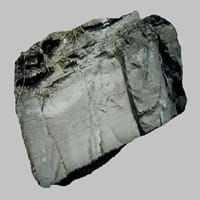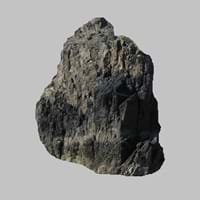Definition
A sedimentary rock, deposit of a submarine turbidity currents and are composed of layered particles
Metapelite is an old and currently not widely used field geological term for a clay rich fine-grained clastic sediment or sedimentary rock, i.e. mud or a mudstone
Origin
European Foreland Basins
Unknown
Discoverer
Arnold H. Bouma
Unknown
Etymology
From Medieval Latin turbiditas, from Latin turbidus (turbid). Turbidity current is from 1939
From Pelos or clay in Greek
Class
Sedimentary Rocks
Metamorphic Rocks
Sub-Class
Durable Rock, Soft Rock
Durable Rock, Medium Hardness Rock
Group
Not Applicable
Not Applicable
Other Categories
Coarse Grained Rock, Fine Grained Rock, Opaque Rock
Coarse Grained Rock, Fine Grained Rock, Medium Grained Rock, Opaque Rock
Texture
Mud-rich, Sandy
Foliated
Color
Black, Brown, Colourless, Green, Grey, Pink
Dark Greenish - Grey, Green, Light Green, Light Greenish Grey
Durability
Durable
Durable
Scratch Resistant
Yes
Yes
Appearance
Dull and Banded
Banded
Interior Uses
Bathrooms, Countertops, Decorative Aggregates, Flooring, Homes, Interior Decoration
Decorative Aggregates, Interior Decoration
Exterior Uses
As Building Stone, As Facing Stone, Paving Stone, Garden Decoration
As Building Stone, As Facing Stone
Other Architectural Uses
Curbing
Curbing
Construction Industry
As Dimension Stone, Cement Manufacture, Construction Aggregate, for Road Aggregate, Making natural cement
Cement Manufacture, Construction Aggregate, for Road Aggregate
Medical Industry
Not Yet Used
Not Yet Used
Antiquity Uses
Artifacts, Monuments, Sculpture
Artifacts
Commercial Uses
Cemetery Markers, Creating Artwork
Commemorative Tablets, Creating Artwork
Types
Not Available
Not Available
Features
High silica content, Host Rock for Lead
Easily splits into thin plates, It is One of the Oldest, Strongest and Hardest Rock
Archaeological Significance
Monuments
Used
Not Yet Used
Famous Monuments
Data Not Available
Not Applicable
Sculpture
Used
Not Yet Used
Famous Sculptures
Data Not Available
Not Applicable
Figurines
Used
Not Yet Used
Formation
Turbidite is a type of sedimentary rock formed when a river carries or transports pieces of broken rock as it flows. These particles then settle down and are subjected to high temperature and pressures hence forming Turbidite.
Due to change in environmental conditions, rocks are heated and pressurized deep inside the Earth's surface. Metapelite is formed from the extreme heat caused by magma or by the intense collisions and friction of tectonic plates.
Mineral Content
Coesite, Quartz, Sand
Albite, Chlorite, Quartz
Compound Content
CaO, Carbon Dioxide, MgO
Aluminium Oxide, CaO, MgO
Types of Metamorphism
Not Applicable
Not Applicable
Types of Weathering
Biological Weathering, Chemical Weathering, Mechanical Weathering
Biological Weathering, Chemical Weathering, Mechanical Weathering
Types of Erosion
Chemical Erosion, Coastal Erosion, Sea Erosion, Water Erosion, Wind Erosion
Chemical Erosion, Coastal Erosion, Water Erosion, Wind Erosion
Grain Size
Fine to Coarse Grained
Medium to Fine Coarse Grained
Fracture
Splintery
Fibrous
Streak
White, Greenish White or Grey
Unknown
Porosity
Very Less Porous
Highly Porous
Compressive Strength
Not Available
Cleavage
Disjunctive
Not Available
Toughness
2.4
Not Available
Specific Gravity
2.46-2.73
3.4-3.7
Transparency
Opaque
Opaque
Density
1.6-2.5 g/cm3
0-300 g/cm3
Resistance
Heat Resistant
Heat Resistant, Impact Resistant, Pressure Resistant
Deposits in Eastern Continents
Asia
Not Yet Found
Not Yet Found
Africa
Western Africa
Western Africa
Europe
Austria, Belarus, Romania, Switzerland, United Kingdom
United Kingdom
Others
Not Yet Found
Not Yet Found
Deposits in Western Continents
North America
Canada, USA
Not Available
South America
Brazil, Colombia
Brazil, Colombia, Ecuador
Deposits in Oceania Continent
Australia
New Zealand, Western Australia
Central Australia, Western Australia
Turbidite vs Metapelite Characteristics
Though some rocks look identical, they have certain characteristics which distinguish them from others. Characteristics of rocks include texture, appearance, color, fracture, streak, hardness etc. Turbidite vs Metapelite characteristics assist us to distinguish and recognize rocks. Also you can check about Properties of Turbidite and Properties of Metapelite. Learn more about Turbidite vs Metapelite in the next section. The interior uses of Turbidite include Bathrooms, Countertops, Decorative aggregates, Flooring, Homes and Interior decoration whereas the interior uses of Metapelite include Decorative aggregates and Interior decoration. Due to some exceptional properties of Turbidite and Metapelite, they have various applications in construction industry. The uses of Turbidite in construction industry include As dimension stone, Cement manufacture, Construction aggregate, For road aggregate, Making natural cement and that of Metapelite include Cement manufacture, Construction aggregate, For road aggregate.
More about Turbidite and Metapelite
Here you can know more about Turbidite and Metapelite. The life cycle of a rock consists of formation of rock, composition of rock and transformation of rock. The composition of Turbidite and Metapelite consists of mineral content and compound content. The mineral content of Turbidite includes Coesite, Quartz, Sand and mineral content of Metapelite includes Albite, Chlorite, Quartz. You can also check out the list of all Sedimentary Rocks. When we have to compare Turbidite vs Metapelite, the texture, color and appearance plays an important role in determining the type of rock. Turbidite is available in black, brown, colourless, green, grey, pink colors whereas, Metapelite is available in dark greenish - grey, green, light green, light greenish grey colors. Appearance of Turbidite is Dull and Banded and that of Metapelite is Banded. Properties of rock is another aspect for Turbidite vs Metapelite. The hardness of Turbidite is 3 and that of Metapelite is 5-6. The types of Turbidite are Not Available whereas types of Metapelite are Not Available. Streak of rock is the color of powder produced when it is dragged across an unweathered surface. The streak of Turbidite is white, greenish white or grey while that of Metapelite is unknown. The specific heat capacity of Turbidite is 0.92 kJ/Kg K and that of Metapelite is 0.72 kJ/Kg K. Depending on the properties like hardness, toughness, specific heat capacity, porosity etc., rocks are resistant to heat, wear, impact, etc.Turbidite is heat resistant whereas Metapelite is heat resistant, impact resistant, pressure resistant.





